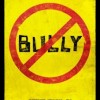 When the documentary Bully opened this month in theaters all over the U. S., it revived the national dialogue about childhood bullying. The film follows three students and their families over the course of one school year and two families whose children took their own lives in desperation. The filmmakers have created TheBullyProject website which provides resources and motivates us all – parents, children, families, educators – to act towards eliminating bullying.
When the documentary Bully opened this month in theaters all over the U. S., it revived the national dialogue about childhood bullying. The film follows three students and their families over the course of one school year and two families whose children took their own lives in desperation. The filmmakers have created TheBullyProject website which provides resources and motivates us all – parents, children, families, educators – to act towards eliminating bullying.
Bullying is pervasive in our society today – research indicates that one in three children have been involved in an incident, either as perpetrator or victim. It’s been estimated that 13 million children in the U.S. are bullied each year, with 3 million being absent from school each month because they feel threatened there. Children with special needs are especially vulnerable – they’re 60% more likely to be attacked by bullies. If your child or someone you know is being tormented, you can reach the bullying helpline, 24/7, at 1-855-201-2121 for help and support.
Here are some actions you can take as a parent if you fear your child is being bullied:
Prepare yourself. Slow down and be ready to have a private conversation when you don’t have any major distractions. Sometimes a familiar setting can include a minor diversion to help your child become more comfortable sharing – in your car, when you’re playing catch, working on a puzzle, completing a chore together.
Talk with your child. Create an atmosphere of trust by using your active listening skills. When you’re speaking, ask open-ended questions in a non-judgmental, non-threatening way. Don’t interrupt his responses. Try to keep your emotions in check and be clear in the message you are conveying. Be available and let your child know that his feelings and thoughts are important to you.
Pay attention to non-verbal communication. It may be difficult for your youngster to open up and verbalize facts and feelings so notice her body language. And express your own support with physical closeness and comforting hugs as well as your words. You may not learn all the facts at one time so be patient and come back to the issues later.
Be positive. Let your child know that you are on his side, it’s not his fault and he doesn’t deserve to be bullied. Role model your own constructive behavior and good communication skills at home. Arrange for her to spend time with friends in a safe environment outside of school so that she can develop personal strengths. Discourage them from bullying others in response.
Contact your child’s school. Once you have a clear understanding of what’s been going on, write it down so that you have a straightforward narrative about the problem. Identify the appropriate people in your child’s school to contact and communicate your concerns to them. If your school has an anti-bullying policy in place, follow the procedures outlined there. The administrators have a responsibility to eliminate harassment, protect your child from harm and create a positive environment for learning.
On Wednesday, we’ll continue the discussion of bullying and give you some suggestions for preventing your own children from harassing others and for encouraging them to stick up for a threatened friend.










7 Responses to Bully